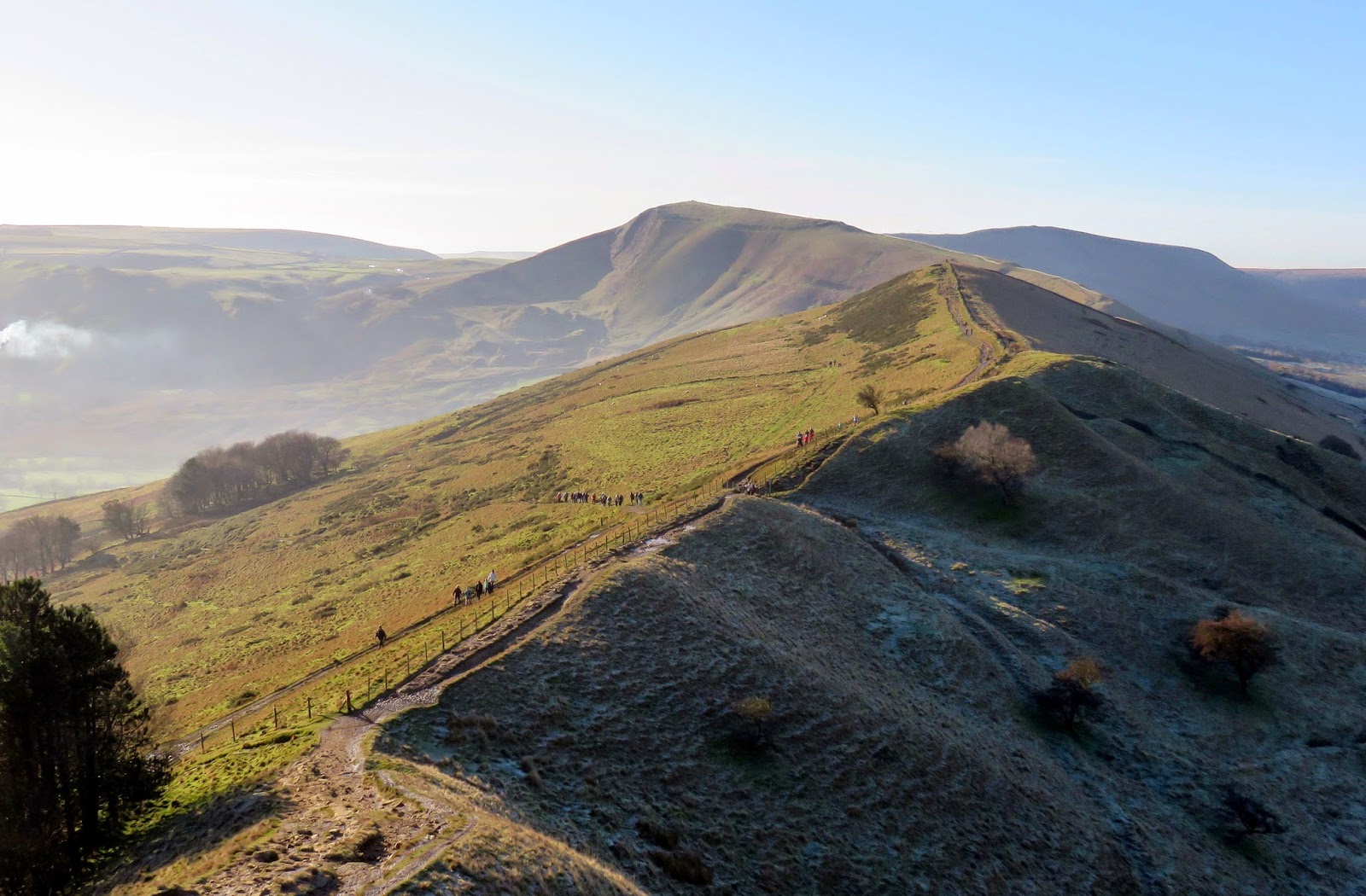This map was created using GPS Visualizer's do-it-yourself geographic utilities.
Please wait while the map data loads...
Route: Castleton, Cave Dale, Limestone Way, Rowter Lane, Windy Knoll, Mam Tor, Hollins Cross, Barker Bank, Back Tor, Lose Hill, Losehill End, Townhead, Townhead Bridge, Hope, Peakshole Water, Castleton
From: Castleton
Parking: Roadside parking in Castleton
Start Point: Cave Dale
Region: Peak District Dark & White Peak
Route length: 9 miles (14.5 km)
Time taken: 03:39
Average speed: 2.5 mph
Ascent: 613m
Descent: 626m
Summits on this walk:
Mam Tor (517m), Barker Bank (426m), Lose Hill (476m)
Other points of interest: Cave Dale, Hollins Cross, Back Tor
I've been working over the festive period, bound to the house on standby for a week while missing out on the glorious weather we've been experiencing recently. People's posts and pictures of the Lake District certainly have me green with envy. I was finally freed from the shackles of work by the time the first weekend of 2015 rolled into view so Sara and I planned a short trip to a mountain ridge in miniature - Edale's Great Ridge.
Though of fairly modest elevation throughout its length, the ridge sits splendidly isolated dividing the picturesque Vale of Edale and Hope Valley and surrounded by some of the finest scenery the Peak District has to offer. I have done this walk a couple of times, once when I was still in short trousers and didn't care much for walking and another when it snowed and rained in equal measures so today was probably the first time I've really been able to appreciate the beauty of the undulating hills.
We started off by heading away from the ridge, taking a route south that leads into the depths of Cave Dale. The dry limestone valley is a real highlight of the Hope Valley, formed by glacial meltwater thousands of years ago. The walls of the lower section closest to Castleton are some 50m tall and almost perpendicular to the ground, casting a dark shadow across the entire valley. The Limestone Way, a long-distance route from Castleton to Matlock, runs up the length of Cave Dale and, despite the slippery ice, the route is easy enough to follow though steep in places.
 |
| The craggy walls of Cave Dale |
 |
| The narrowest part of Cave Dale |
 |
| Cave Dale |
 |
| One of the many caves in Cave Dale |
 |
| Cave Dale and Peveril Castle |
 |
| Cave Dale with Lose Hill behind |
 |
| The shallow beginning of Cave Dale |
 |
| Leaving Cave Dale |
 |
| An adjacent track leading back to Castleton |
 |
| Mam Tor on the horizon |
 |
| A drystone wall near Rowter Farm |
 |
| Mam Tor |
 |
| The Great Ridge |
 |
| The road leading into Edale with Kinder Scout behind |
 |
| Rushup Edge and Edale |
 |
| Rushup Edge |
 |
| Jacob's Ladder and Crowden Clough |
 |
| Mam Tor's trig pillar |
 |
| The landslide |
 |
| The landslide once again |
 |
| The Great Ridge and Hope Valley |
 |
| The Great Ridge |
 |
| Barker Bank, Back Tor and Lose Hill |
 |
| The paved surface that accompanies most of the route |
 |
| Hope Valley |
 |
| Mam Tor |
 |
| An old pair of gate posts |
 |
| Hollins Cross |
 |
| Mam Tor from Barker Bank |
 |
| Back Tor and Lose Hill |
 |
| Back Tor |
 |
| The climb up Back Tor |
 |
| Barker Bank and Mam Tor |
 |
| Edale |
 |
| Cairn at Back Tor |
 |
| Win Hill from Lose Hill |
 |
| Lose Hill |
 |
| The muddy track to Losehill End |
 |
| Penfold in Hope |
 |
| Lose Hill |
 |
| Mam Tor over Castleton |
 |
| Winnats Pass |
 |
| The Great Ridge |
 |
| Mam Tor |
 |
| The crumbling road beneath Mam Tor |
 |
| Back Tor and Lose Hill |
 |
| The Hope Valley |

No comments :
Post a Comment